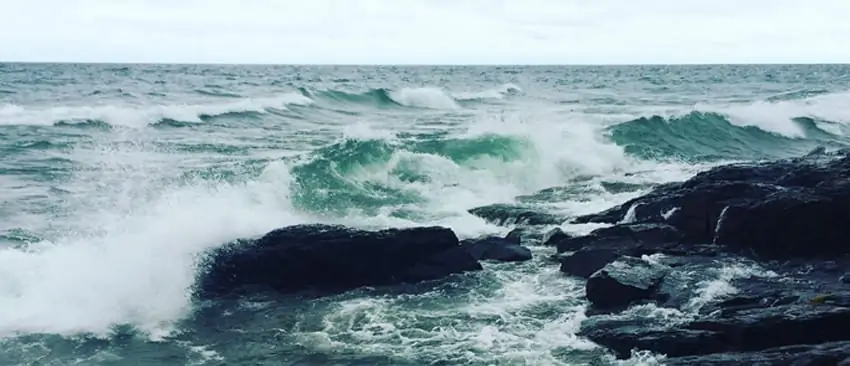
Global Warming
Although it’s fairly hard to notice the effects pollution & global warming is having on Lake Superior, there is no doubt that the lake is changing. As data is crunched into computers, it becomes apparent that Lake Superior is responding to global climate change.
Surface-water temperatures in Lake Superior are one effect that has been observed. It has warmed twice as much as the air above it since 1980. In fact, every decade we are seeing an increase in about 2 degrees Fahrenheit in surface water temperature. While the regional air temperature has increased only one degree. Also, the ice cover on the lake is diminishing at a rate of about 0.5% per year. Over the last century, the lake has seen a drop in the amount of ice covering the lake from 23% to 12%.
One of the biggest concerns regarding the lake and its rising temperatures is how long the summer stratification season is becoming. Spring turnover has become earlier by about half a day per year. Leading to earlier stratification, and in return, making fall mixing later. Most people may not even notice the effects global warming is taking on the lake. But some notice more frequent and intense storms, warmer annual temperatures, drier summers, warmer winters, and much more.

Pollution
Lake Superior is the cleanest and clearest of the Great Lakes thanks to low amounts of nutrients, sediments, and organic material. Even so, pollution is still impacting the lake. Because the lake’s shores are not as developed with cities and industries as the other Great Lakes, it hasn’t suffered from pollution in ways many other lakes do. This lets the wildlife that call Lake Superior home flourish and enjoy a healthy life.
However, this type of pollution is only part of the story. All the Great Lakes suffer pollution from the atmosphere that contaminates the lake through rain, snow, and dry particles. Almost all the toxic pollution found in Lake Superior, like mercury, PCB’s, and persistent contaminants, come from the atmosphere.
Keeping Lake Superior clean is the challenge – both keeping it that way and addressing any problems that are found. The Minnesota Pollution Control Agency (MPCA) is tackling the restoration and protection of Lake Superior through a number of approaches. Using a geographically based approach to water quality protection and restoration will enable them to identify water quality problems. Also, working with communities to spread the word and develop effective pollutant-reduction strategies is crucial to help the effects of pollution & global warming.
